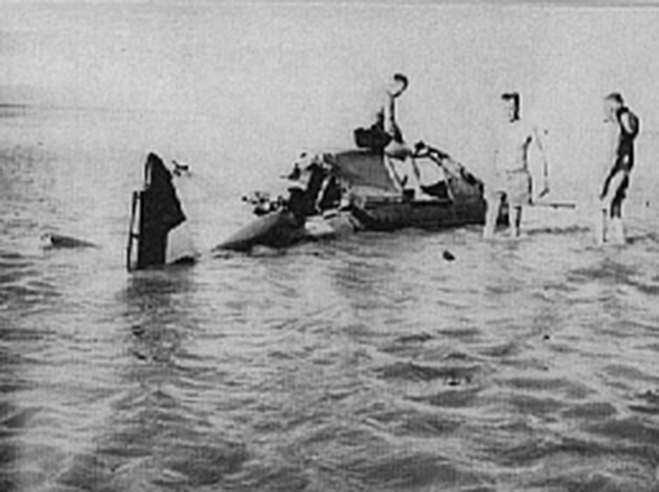


On the evening of Thursday, April 22, 1943, residents of Wilson Beach saw a plane with its landing lights on passing south along the lower reach of the Proserpine River and soon became aware it had landed somewhere along New Beach.
On this fateful day, two Kittyhawk aircraft were hopping their way along the coast, refuelling where they could, enroute to New Guinea from Bankstown, New South Wales. It was a routine trip - the Kittyhawks, which arrived in crates from America, were assembled then test-flown to be finally delivered to New Guinea or other war-zones. Usually there were two or more planes flying together – on this occasion, the pilots were Flight Sergeant John (Jack) Bowen McGrath and Sergeant Archie Gordon Boyd.
McGrath and Boyd had planned to land at Rockhampton but overshot the town and while then intending to make Mackay, they became lost. As the evening closed in, the pilots ran into heavy cloud and became separated. McGrath, low on fuel, decided to make a landing on New Beach to the south of the Proserpine River mouth. He had intended to land on the beach itself but misjudged his approach. Instead, he hit the water, 'pancaking' several times and losing his propeller and oil and glycol coolers in the process until finally coming to rest at such a speed the plane's back was broken and its engine was catapulted from its mountings about twenty metres in front of the fuselage. McGrath was very fortunate to escape with only minor injuries - ‘a couple of black eyes’, from having hit his head on the plane’s gun-sight which fortunately was covered with sponge rubber. Tragically, Boyd was never heard of again.
Meanwhile, locals, George Baxter, Dan Wilson, Henry Allan and Jack Allan, took to a dinghy and rowed across to the scene. They found McGrath, taking him back to George Baxter’s home, arriving at about 4 am on April 23. McGrath stayed with the Baxters until the following Monday when he was taken to the Proserpine Police Station where he was met by Air Force officers from Townsville.
During his stay with the Baxters, McGrath returned to the scene with an RAAF recovery team which had arrived from Townsville by truck. They travelled daily from what was then the Proserpine Hotel to the crash site where they had to work in the water, the wreck fully covered at high tide. Using the 11.8 metre launch “Gleam”, then owned by Bert Clarke, they retrieved the motor, propeller, guns, ammunition etc and, with the aid of a makeshift raft of 44-gallon drums, towed the salvage up the Proserpine River to a point approximately where the launching ramp opposite Flying Fox Island is located today. There they loaded it onto their truck and took it to Townsville. The fuselage of the Kittyhawk, its back broken, was left to disintegrate where it had landed, though many a souvenir was taken from it by locals.
Flight Sergeant McGrath later became a member of 76 Kittyhawk Squadron, flying in operations in the New Guinea war zone among the Trobriand Islands, New Britain and the Admiralty Islands. He survived the war and died aged 82 in Sydney in June 1999.
Story and photo courtesy Proserpine Historical Museum and Ray Blackwood’s “The Whitsunday Islands – An Historical Dictionary.”
The wreckage of the kittyhawk on New Beach
Locals holding part of the wreckage
The fuselage
A kittyhawk plane